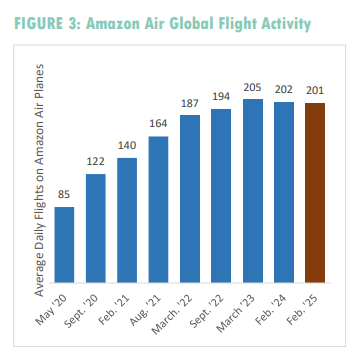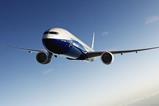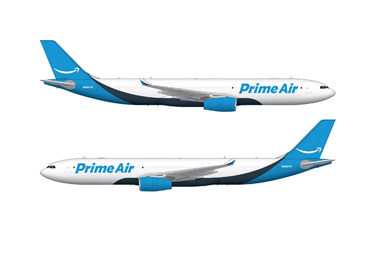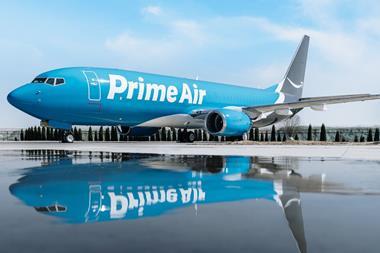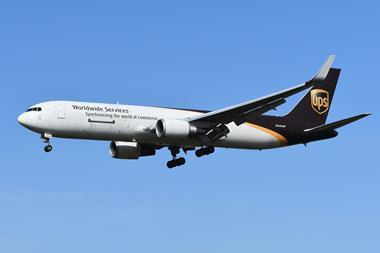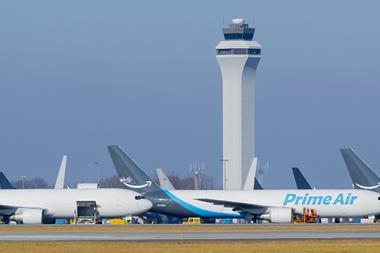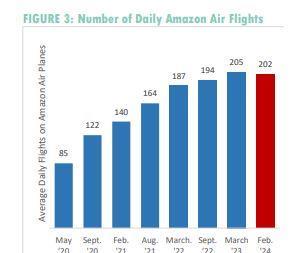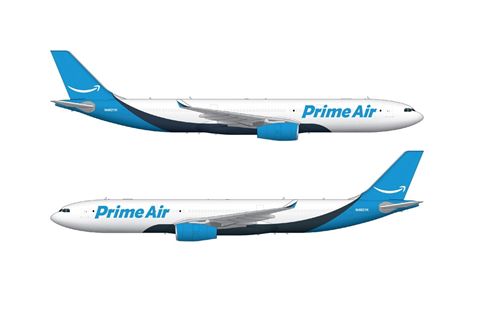
Amazon Air has continued to expand its widebody air cargo capacity in a move that will help it accommodate more third-party shipments.
It has also increased night flights and reduced short-haul flights in favour of trucking, while it heavily focuses on the US market following its scaling back of European services in 2023.
These are some of the key findings in newly published research by the Chaddick Institute for Metropolitan Development, based at DePaul University in Chicago.
"Amazon Air is a much different air cargo unit from two years ago due to its addition of widebody aircraft, expanded nocturnal flying, and heavy emphasis on the domestic US market," stated the report.
The research found that between March 2024 and 2025, the tonnage capacity of Amazon Air’s US fleet increased by 14% and the volume capacity by 12.9%.
It now has ten Airbus A330-300 freighters, seven of which were added over the past year, although two have not yet begun revenue service. These planes have 17% more tonnage and 6% more volume capacity than Boeing 767-300s, Amazon's next largest aircraft.
In fact, more than three-fourths of Amazon's available ton-miles in the US are now on widebodies, a dramatic increase from three years ago, said the report.
Although several more planes are recorded as “parked” than last year, capacity is up 7% even when these idle planes are excluded.
There is uncertainty over the future fleet though.
The cargo unit is phasing out its operating partnership with Atlas Air and many Atlas planes have been turned over to other contractors.
"The unit’s intentions for the nine remaining Atlas planes (all but two Boeing 737s) are unclear," said the report.
The ATSG Group's ABX, in which Amazon has an equity stake, and new partner 21 Air still fly for the retailer though.
Globally, capacity is up 13% over one year and 18% since 2023, almost entirely due to an enlarged US fleet, however, excluding parked aircraft, global capacity is up 6.6%.
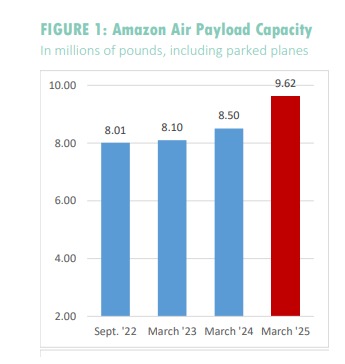
Having larger planes and more capacity better enables the company to carry out its third party shipping business, including bulk cargo.
For a carrier that suffers from disproportionate outbound cargo at its hubs, "revenue potential from large inbound shipments to its busiest hubs is particularly attractive," noted the report.
In line with focusing on larger aircraft, Amazon has reduced the number of airports it operates to - dropping five since mid-2023.
The airline has also moved away from a singular focus on the Cincinnati-Northern Kentucky International Airport (CVG) superhub by expanding at other US hubs.
CVG now has more long-haul and nocturnal flying and is a focal point for the A330Fs, while the cluster of airports centring on California’s San Bernardino International has seen significant expansion, positioning it as a critical transhipment point for goods arriving from the Pacific Rim and parcel shipments in the western US, according to the report.
Texas’s Ft. Worth Alliance has also become Amazon Air’s second-busiest airport.
Nocturnal flying - between 11pm and 5.59am - also expanded by over one-third in the US over the past year, both at Cincinnati and other hubs.
The proportion of domestic US flights on nocturnal flights grew from 30.1% in early 2023 to 29.1% in early 2024 to 38.96% in early 2025.
Amazon has also reduced the number of short-haul flights that it carries out in favour of using trucks for short and mid-distance shipments.
In the US, the proportion of flights with distances under 400 miles has been more than halved in the past two years and now accounts for just 5.1% of the total.
Meanwhile, in Europe, Amazon has continued its strategy of scaling back activity. Amazon Air’s 12 daily flights in Europe, aside from Saturday when it doesn't fly, is less than one-third of what the airline had in 2022. All flights are operated by its ASL Ireland contractor using Boeing 737-800s.
The carrier is also maintaining its strategy of not pursuing hub development. It is instead focusing on point-to-point flying at airports within or near the Golden Triangle, a region bounded by Amsterdam, Frankfurt and Paris. Two-thirds of all European freight is now handled in this area.
